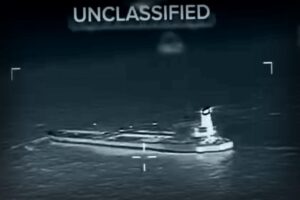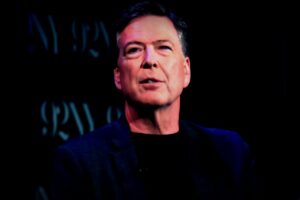NEW YORK CITY — Donald Trump, the former president of the United States, has reversed his previous stance and is no longer urging Ukraine to surrender any of its land in order to end the ongoing conflict with Russia. In a post on Truth Social, he expressed his belief that Ukraine is now capable of ‘fighting and WINNING back all of its territory in its original borders.’
This statement came after a lengthy discussion with Ukrainian President Volodymyr Zelensky during the United Nations General Assembly in New York City. Trump shared this update via a post he made on social media.
He mentioned that after closely examining the military and economic dynamics of the Ukraine-Russia situation, he feels confident that Ukraine, especially with support from the European Union, is well-positioned to regain all its original territory. ‘With time, patience, and backing from Europe and NATO, the return to the original borders should truly be on the table. I mean, why not? Russia is acting like a weakened power in a conflict that should have been wrapped up swiftly by a true military force,’ he added.
Trump seemed increasingly frustrated with Russian President Vladimir Putin, describing Russia’s efforts in the war as indicative of a ‘paper tiger’ and even suggested that Ukraine might have the chance to reclaim some Russian territories.
He wrote, ‘When people in Moscow and big cities across Russia understand the reality of this war—the massive fuel shortages they are facing, and the havoc created in their economy by fighting Ukraine, where the spirit remains strong and is improving—they might find themselves surprised. Ukraine could potentially restore its former territory and maybe even push further!’ He cautioned that Russia is experiencing significant economic challenges and this is the moment for Ukraine to seize the initiative.
Ukraine achieved independence in 1991, inheriting borders defined during the Soviet Union years. Notably, it incorporated regions from the Second Polish Republic post-World War II and the Crimean peninsula, handed over by Soviet leader Nikita Krushchev in 1954.
Following European-influenced protests in 2014, Russia took control of Crimea, sparking the rise of pro-Russian factions in the Donetsk and Lugansk areas, both of which sought to join Russia—impacting the balance in these self-declared territories until recent events escalated the situation in 2022, when Russia launched a broad invasion. The annexations in September 2022 were greeted with global condemnation and remain largely unrecognized internationally.
Before his meeting with Zelensky, Trump encouraged NATO to engage more actively, specifically advocating for its allies to down Russian aircraft that breach their airspace.
Regarding the possibility of U.S. support for NATO response amid Russian airspace violations, he noted, ‘It varies based on the circumstances.’
This meeting between Trump and Zelensky took place six weeks after Trump’s own discussion with Putin in Alaska—showcasing the lack of progress towards ceasefire negotiations since.
When questioned about his trust in Putin, Trump stated, ‘I’ll find out more about that soon.’
Despite previous tensions, Trump reciprocated Zelensky’s admiration for his resilience in facing these challenges, acknowledging the gravitas of his fight.
Earlier on the day of their meeting, Trump had audiences with global moderators like U.N. Secretary-General António Guterres and European Commission President Ursula von der Leyen, where he reiterated criticisms of their organizations concerning the war.
He pointed out that ‘China and India are really the primary benefactors of this ongoing war by buying Russian oil. And it’s even more appalling how NATO nations haven’t significantly cut their reliance on Russian energy… They are unintentionally funding a war against themselves.’
Following this, NATO Secretary-General Mark Rutte aligned with Trump, asserting that NATO is a “defensive alliance” and reiterated the need for vigilance against any threats.
In light of these developments, it remains to be seen how both parties will navigate this tumultuous geopolitical landscape moving forward.




















